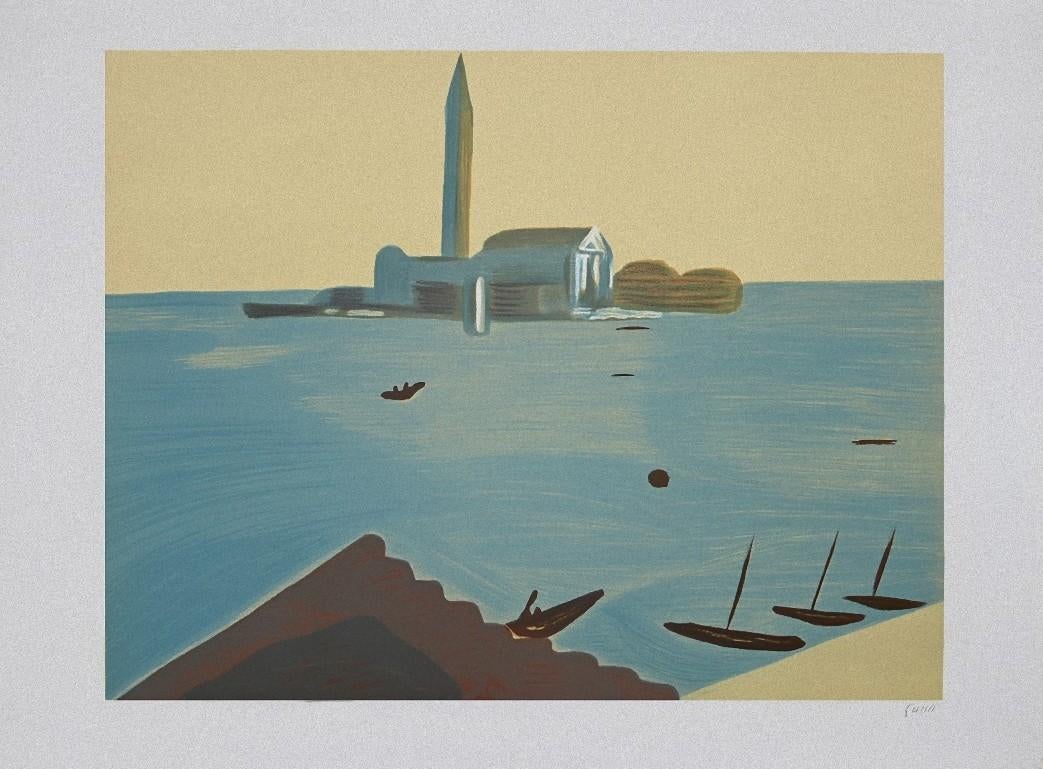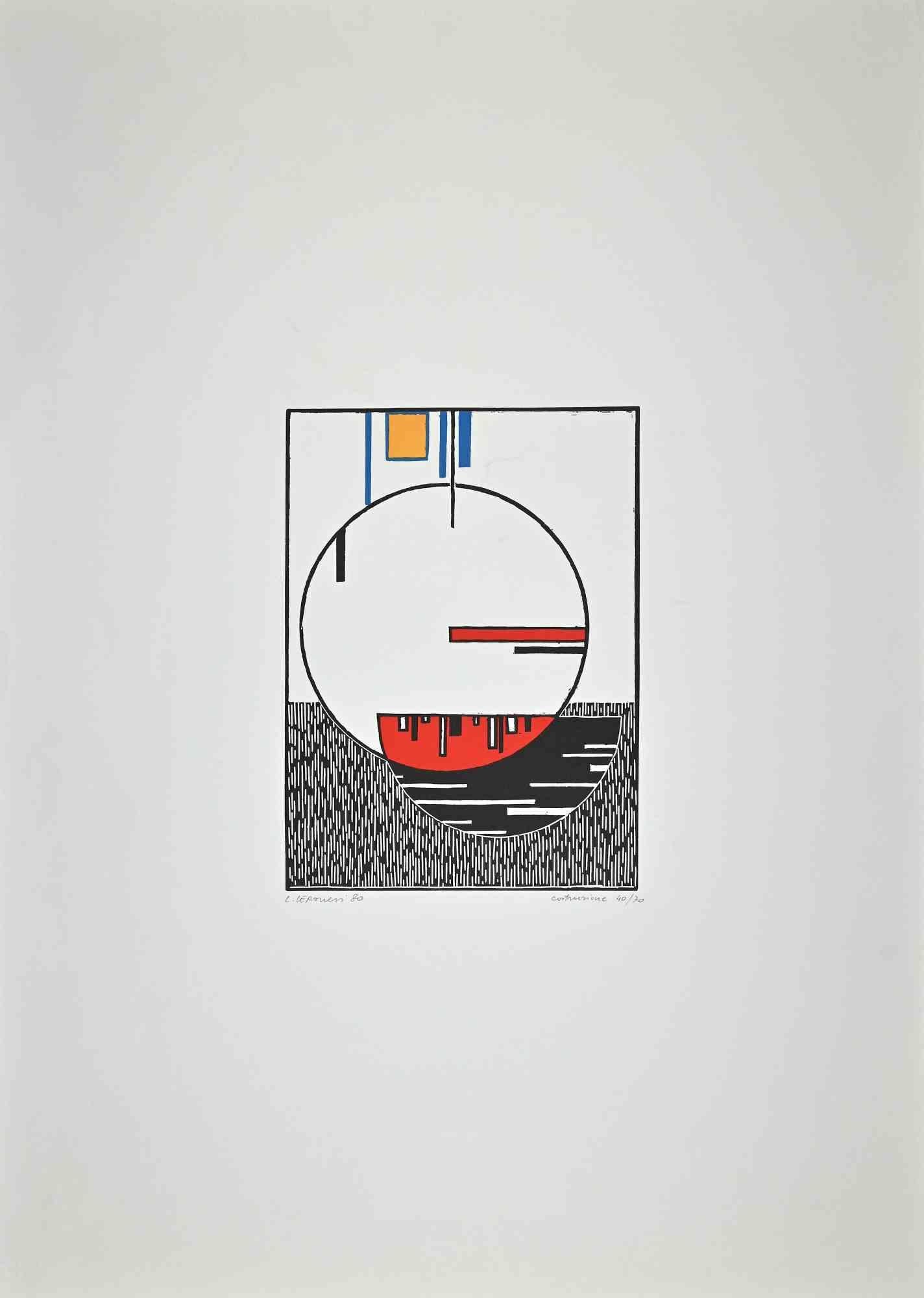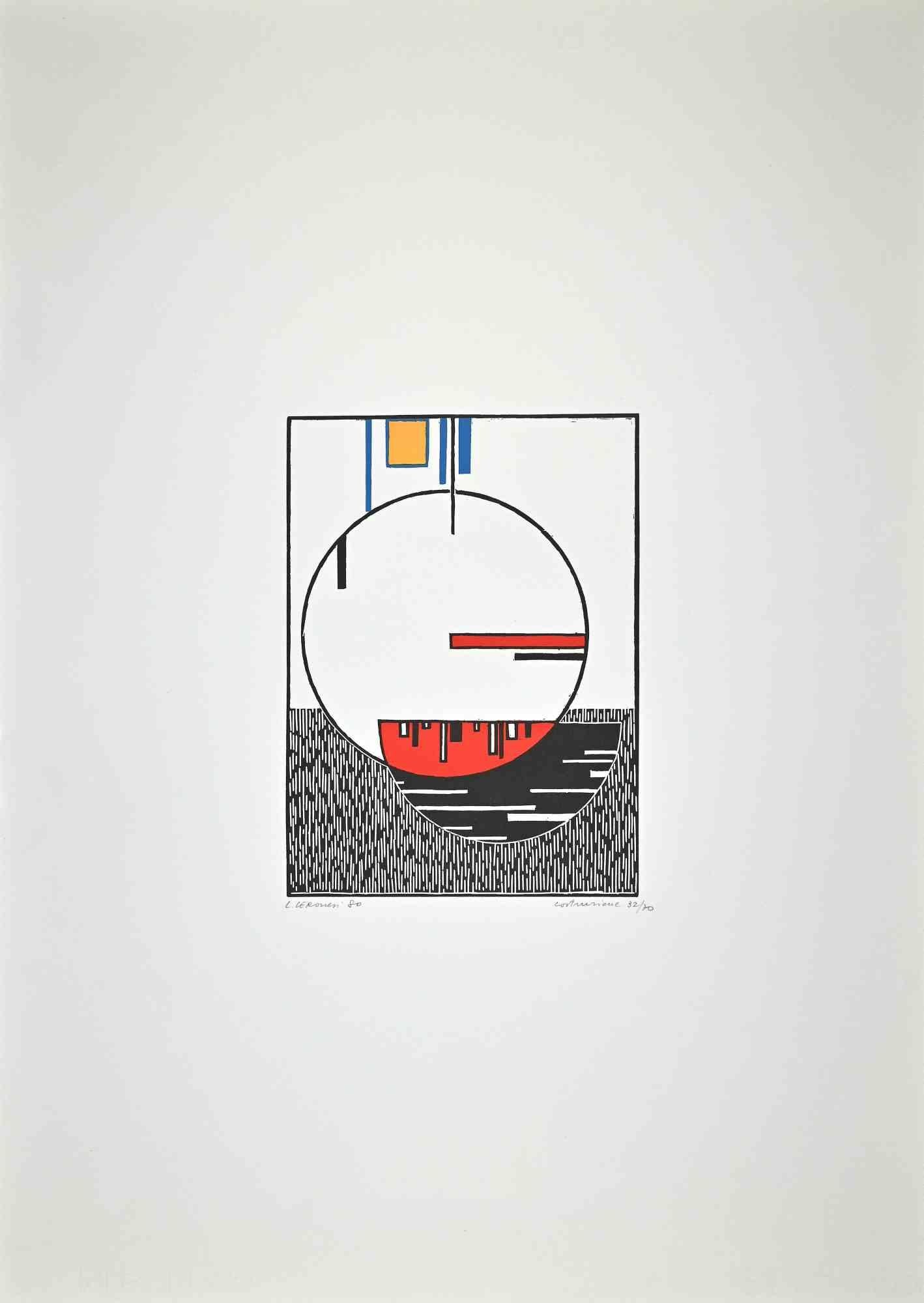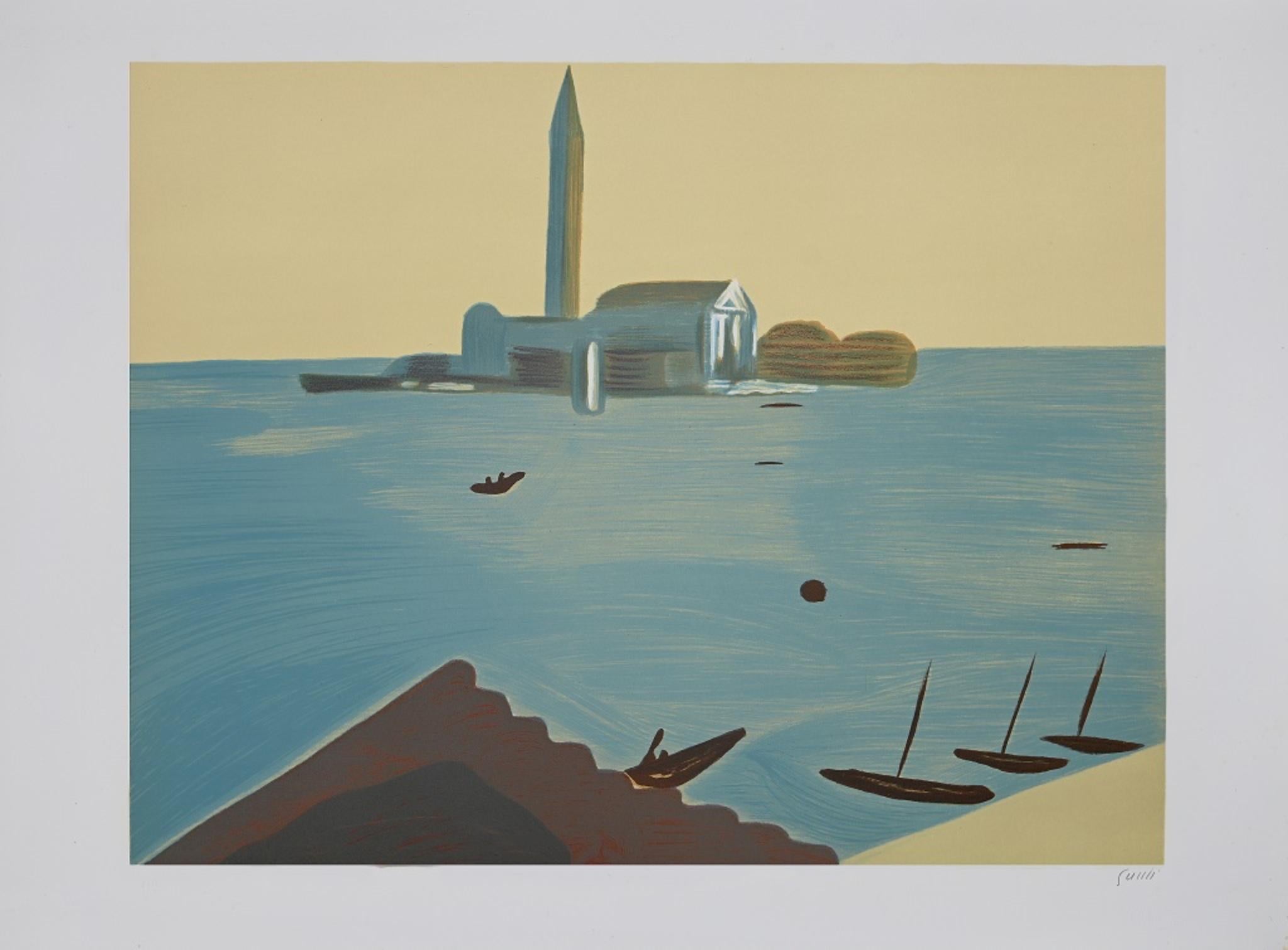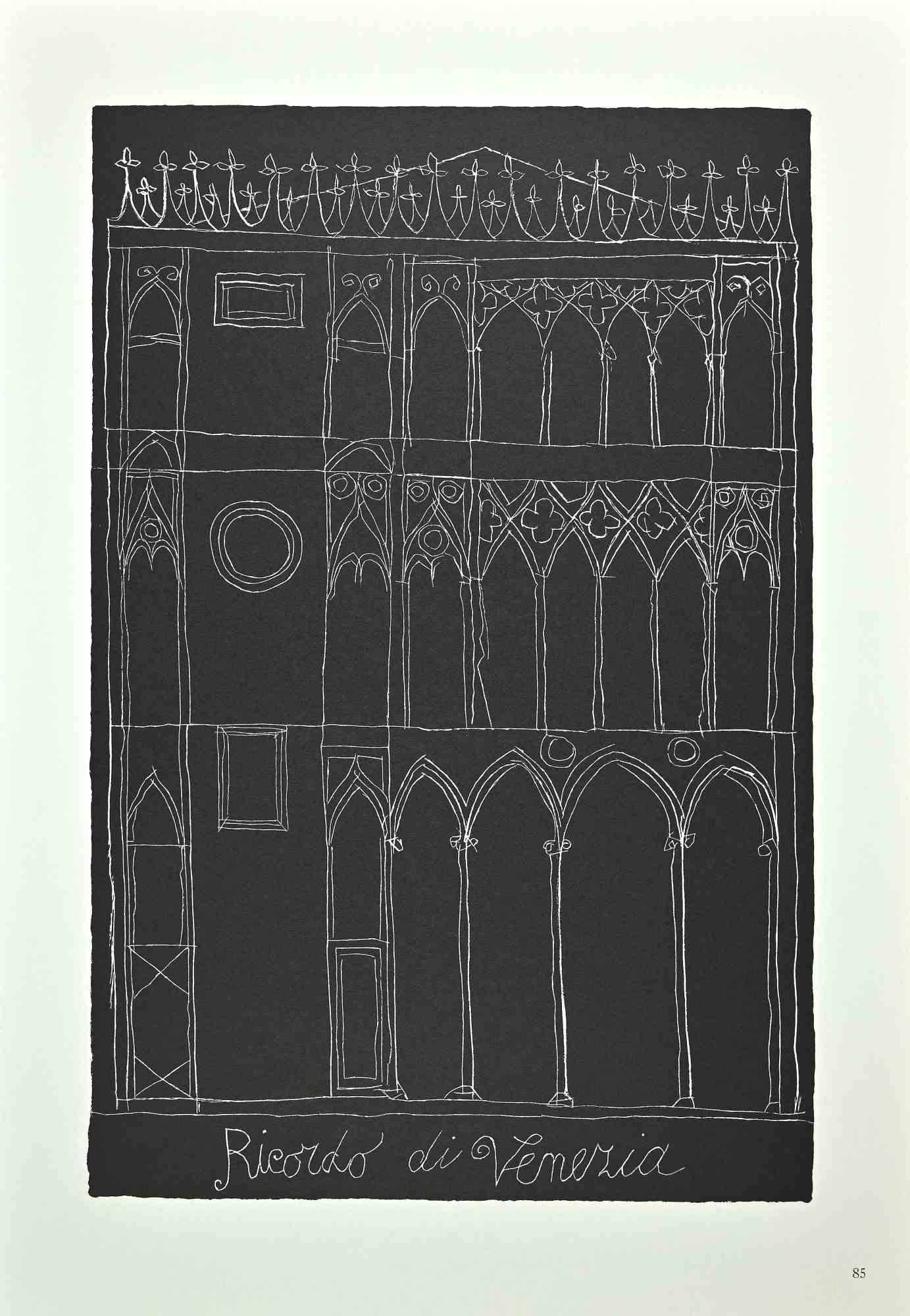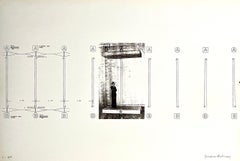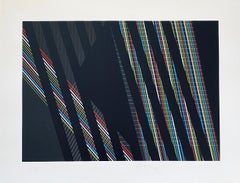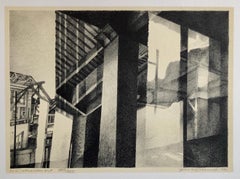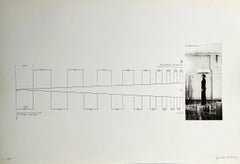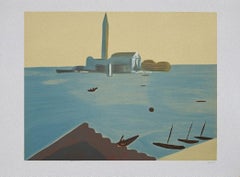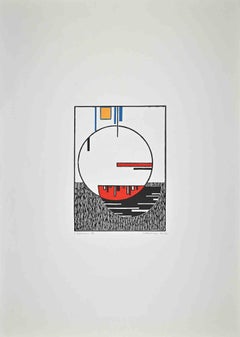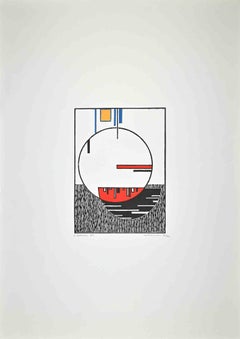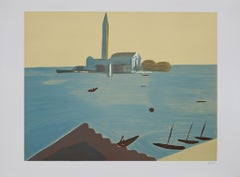Items Similar to VENEDIG 1997, Silkscreen Print, Minimalist Conceptual Architectural Silkscreen
Want more images or videos?
Request additional images or videos from the seller
1 of 7
Gerhard MerzVENEDIG 1997, Silkscreen Print, Minimalist Conceptual Architectural Silkscreen1998
1998
$1,000
£772.56
€878.13
CA$1,421.86
A$1,547.63
CHF 815.22
MX$18,838.63
NOK 10,208.40
SEK 9,583.85
DKK 6,557.95
About the Item
From the 'Sequences' series, this silkscreen print depicts block color and architecture. Edition of 60.
Gerhard Merz (born 25 May 1947 in Mammendorf , district of Fürstenfeldbruck ) is a German artist.
From 1969 to 1973, he studied at the Munich Academy of Fine Arts and became masterclass of Rudi Tröger . Between 1964 and 1969, inspired by Francis Bacon and Uwe Lausen , expressive pictures emerged and subsequently metal sculptures. Since the beginning of the 1970s, he has been increasingly successful with spatial installations in which he drew references to the history of literature and art, as well as to political history, as well as the development of large-format, monochrome images with lines of pencil strokes. In the building of the Federal Foreign Office in Bonn , he designed a wall with a large polychromatic mosaic.
Beginning in 1977, he was represented with his works four times in a row at the documenta in Kassel .
In 1983 he was awarded the Arnold-Bode-Prize of the documenta - City of Kassel . In 1991 he received a reputation as a professor at the Kunstakademie Düsseldorf . In 1998/1999, he was commissioned to design the rooms in the context of the old building renovation of the Federal Foreign Office in Berlin in a joint project with the architect Hans Kollhoff . In 2004 he moved to a professorship at the Academy of Fine Arts Munich .
Gerhard Merz lives and works in Munich and in Pescia , Italy .
Exhibitions:
1977: documenta 6 , Kassel
1981: Western art , Cologne
1982: documenta 7 , Kassel
1984: From here - Two months of new German art in Düsseldorf , Düsseldorf
1986: Chambres d'Amis , Ghent
1987: documenta 8 , Kassel
1992: documenta IX , Kassel
1992: 'Gerhard Merz - Archipitura', Deichtorhallen Hamburg
1997: Biennial of Venice , Venice
- Creator:Gerhard Merz (1947, German)
- Creation Year:1998
- Dimensions:Height: 23 in (58.42 cm)Width: 19 in (48.26 cm)
- Medium:
- Movement & Style:
- Period:
- Condition:Measurements include frame.
- Gallery Location:Surfside, FL
- Reference Number:1stDibs: LU38211588172
About the Seller
4.9
Platinum Seller
Premium sellers with a 4.7+ rating and 24-hour response times
Established in 1995
1stDibs seller since 2014
1,823 sales on 1stDibs
Typical response time: 1 hour
- ShippingRetrieving quote...Shipping from: Surfside, FL
- Return Policy
Authenticity Guarantee
In the unlikely event there’s an issue with an item’s authenticity, contact us within 1 year for a full refund. DetailsMoney-Back Guarantee
If your item is not as described, is damaged in transit, or does not arrive, contact us within 7 days for a full refund. Details24-Hour Cancellation
You have a 24-hour grace period in which to reconsider your purchase, with no questions asked.Vetted Professional Sellers
Our world-class sellers must adhere to strict standards for service and quality, maintaining the integrity of our listings.Price-Match Guarantee
If you find that a seller listed the same item for a lower price elsewhere, we’ll match it.Trusted Global Delivery
Our best-in-class carrier network provides specialized shipping options worldwide, including custom delivery.More From This Seller
View AllAustrian Sound Space Architect Bernhard Leitner Photo Lithograph Hand Signed Art
Located in Surfside, FL
Bernhard Leitner, (Austrian, 1938)
From a portfolio "Sound : Space" "Ton : Raum"
Self published by artist in 1975/1976,
Limited edition of 50
Hand signed in pencil by artist.
Acc...
Category
1970s Modern Abstract Prints
Materials
Screen
Italian Kinetic Op Art Attilio Taverna Silkscreen Lithograph Print Light Artist
By Attilio Taverna
Located in Surfside, FL
*picture with description not included with lithograph.
Attilio Taverna, born 1945. Italian geometric abstract artist known for his painting and lithograph and silkscreen prints.
...
Category
1980s Abstract Prints
Materials
Lithograph
Chicago Scene Modernist Architectural Lithograph, Nevada Artist
Located in Surfside, FL
Jim McCormick was born in Chicago in 1936. He attended the University of Tulsa where he received a bachelor’s degree in art in 1958, then a M.A. in paint...
Category
1980s American Modern Abstract Prints
Materials
Lithograph
Austrian Sound Space Architect Bernhard Leitner Photo Lithograph Hand Signed Art
Located in Surfside, FL
Bernhard Leitner, (Austrian, 1938)
From a portfolio "Sound : Space" "Ton : Raum"
Self published by artist in 1975/1976,
Limited edition of 50
Hand signed in pencil by artist.
Acc...
Category
1970s Modern Abstract Prints
Materials
Screen
Israeli Contemporary Vintage Lithograph Poster
Located in Surfside, FL
Buky Schwartz (pronounced BOO-kie) (Hebrew: בוקי שוורץ; June 16, 1932 – September 1, 2009, Tel Aviv) was an Israeli sculptor and video artist.
Moshe (Buky) Schwartz was born in Jer...
Category
Late 20th Century Contemporary Prints and Multiples
Materials
Lithograph
Italian Kinetic Op Art Attilio Taverna Silkscreen Lithograph Print Light Artist
By Attilio Taverna
Located in Surfside, FL
*picture with description not included with lithograph.
Attilio Taverna, born 1945. Italian geometric abstract artist known for his painting and lithograph and silkscreen prints.
...
Category
1980s Abstract Prints
Materials
Lithograph
You May Also Like
Venezia - Original Lithograph by Virgilio Guidi - 1982
By Virgilio Guidi
Located in Roma, IT
Venezia is an original Contemporary Artwork realized in 1982 by the Italian artist Virgilio Guidi.
Original Lithograph on paper.
Hand signed by the artist in pencil on the lower ...
Category
1980s Modern Figurative Prints
Materials
Lithograph
Construction - Screen Print by Luigi Veronesi - 1980
By Luigi Veronesi
Located in Roma, IT
Construction is an original Lithograph realized by Luigi Veronesi in 1980.
Excellent condition on a white cardboard.
Hand-signed and titled with pencil by the artist on the lower m...
Category
1990s Abstract Abstract Prints
Materials
Screen
Construction - Screen Print by Luigi Veronesi - 1980
By Luigi Veronesi
Located in Roma, IT
Construction is an original lithograph realized by Luigi Veronesi in 1980.
Excellent condition on a white cardboard.
Hand-signed and titled with pencil by the artist on the lower m...
Category
1990s Abstract Abstract Prints
Materials
Screen
Venice - Lithograph by Virgilio Guidi - 1982
By Virgilio Guidi
Located in Roma, IT
Venice is an original Contemporary Artwork realized in 1982 by the Italian artist Virgilio Guidi.
Original Lithograph on paper.
Hand signed by the artist in pencil on the lower r...
Category
1980s Contemporary Landscape Prints
Materials
Lithograph
Memory of Venice - Offset Print by Franco Gentilini - 1970s
By Franco Gentilini
Located in Roma, IT
Memory of Venice is an original vintage offset print on ivory-colored paper, realized by Franco Gentilini ( Italian Painter, 1909-1981), in 1970s.
The state of preservation of the ...
Category
1970s Contemporary Figurative Prints
Materials
Paper, Offset
Venice 4/50 - collectors box with ten black-white etching aquatint prints
By Olivier Julia
Located in Doetinchem, NL
Venezia (Venice) is a unique collectors box for everyone with an interest in contemporary modern minimalist prints. This custom made box contains 10 small etching aquatint prints depicting details of old Venice building...
Category
1980s Minimalist Abstract Prints
Materials
Rag Paper, Etching, Aquatint
More Ways To Browse
Banksy Postcard
Chow Chow Dog
Civil Rights Posters
Damien Hirst Rainbow
Jim Dine Saw
Lithograph By Bruce
Martin Engelbrecht
New Orleans Poster
Picasso Lithograph 1967
Pin Up Girl Art
Rome Travel Poster
Vintage Pin Up Art
Vintage Renaissance Art
Vintage Tennis Print
Vintage Vegetable Posters
Art Originals Of California
Battlestar Galactica
Cherry Cakes
